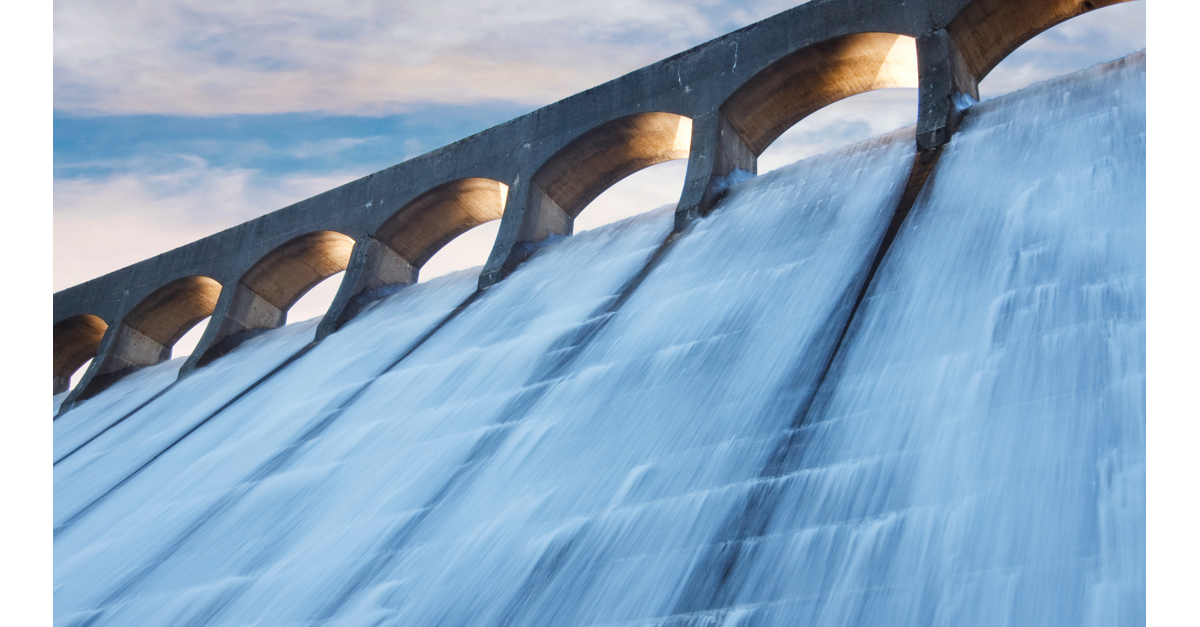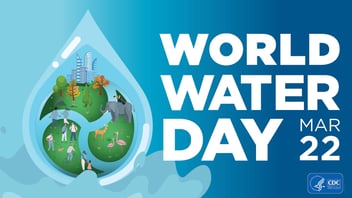Week in water: updates from across the water community

This week in water, Jacobs has been recognised as one of the world’s top environmental and sustainability consultancies, while Aurecon continues its streak as Australia’s most popular engineering employer.
Across the states, Sydney Water has revealed the suburbs using the most water, and a new hub in regional NSW is expected to save half a billion litres annually. In Tasmania, a ‘floating wetlands’ approach to wastewater treatment is being trialled, while in Melbourne, a new partnership is delivering employment opportunities for people with disabilities through the rollout of digital water meters.
Internationally, London’s long-awaited "super sewer" is complete and researchers in Chile are exploring fog harvesting as a potential water source in dry regions.
Do you want in-depth articles on water trends delivered to your inbox? Sign up for the Australian Water Association’s weekly newsletter, Source.
National
Jacobs ranked No. 2 global sustainability consultancy
Jacobs has been ranked as the No. 2 global environmental and sustainability consulting firm in Environment Analyst’s latest Global Environmental & Sustainability Consulting Market Assessment.
This recognition highlights the company’s leadership in helping clients manage environmental impacts, drive sustainability and respond to climate change and the nature crisis.
The report assessed the performance of 35 of the world’s largest consulting firms, which collectively generated $35.3 billion in revenue in 2023. Jacobs’ ranking underscores its position as a key player in the sector.
Aurecon named Australia’s most popular engineering employer
Aurecon has been recognised as Australia’s Most Popular Engineering Employer in The Australian Financial Review and GradConnection Top 100 Graduate Employers Awards 2025, marking its fourth consecutive year receiving the accolade.
The company also ranked in the overall Top 10 Graduate Employers across all industries. Aurecon’s Chief People Officer Liam Hayes attributed the achievement to the firm’s commitment to nurturing early-career talent.
National ecosystem accounts highlight value of natural services
The Australian Bureau of Statistics (ABS) has released its first experimental National Ecosystem Accounts, estimating that climate regulation through carbon storage was the most valuable service provided by select Australian ecosystems in 2020–21.
The accounts align with the international System of Environmental and Economic Accounts and provide insights into key ecosystem services such as carbon storage, water provisioning and grazed biomass production. The initiative is the result of a partnership between the ABS and the Department of Climate Change, Energy, the Environment and Water (DCCEEW).
ABS head of environment statistics Jonathon Khoo said: "Over 34.5 million kilotonnes of carbon was stored by ecosystems, with a combined monetary value of $43.2 billion”.
The ecosystems contributing most to carbon storage were grasslands ($18.1 billion), native forests ($17.8 billion) and savannas ($7.1 billion). Beyond climate regulation, the accounts also assessed the value of grazed biomass ($40.4 billion), water provisioning ($1.4 billion), and wild fish provisioning ($39.2 million).
"Grazed biomass is the amount of feed naturally produced by the environment for sheep and cattle. The $40.4 billion is the estimated amount of money farmers saved by feeding their livestock things like grass and vegetation growing on their land," Khoo said.
States and territories
Sydney Water data shows suburbs using the most water
New data from Sydney Water shows a significant increase in water demand over summer, with residents in Woollahra using 33% more water per household than those in Blacktown.
Woollahra, Hunters Hill, Mosman, Ku-ring-gai and Strathfield recorded the highest usage across Sydney Water’s network.
Sydney Water’s Water Conservation Manager Suhanti Thirunavukarasu said: "We are seeing an increase in water demand across nearly every area Sydney Water services. Residents in the Woollahra area average 304,000 litres per household annually, a stark contrast to the water-saving suburb of Kiama, which averages just 146,000 litres per household”.
“The suburbs topping the water usage list are also recording yearly increases when it comes to water demand per household.,” he said.
New hub to save half a billion litres of water in the regions
Following the success of NSW’s first Regional Water Loss Management Hub, the program is expanding to up to a dozen more councils, with the potential to save 500 million litres of water annually.
The pilot has already saved 815 million litres by helping councils detect inefficiencies, improve training and repair leaks.
NSW DCCEEW Executive Director Operations Resilience Ashraf El-Sherbini said: "Half a billion litres of water is enough to supply 2,500 NSW households for a year. We’re saving this incredible amount through simple, innovative and cost-efficient solutions while working together to share resources and better manage our water supply networks”.
TasWater turns to nature for improved sewage treatment
TasWater is trialling floating wetlands in three sewage treatment lagoons across the state to naturally improve water quality. The wetlands, using Australian native plants, absorb excess nutrients like nitrogen and phosphorus.
TasWater Head of Operational Support and Improvement Amanda Whelan said: "Floating wetlands have been successfully implemented in other parts of Australia, but this marks the first time the approach has been trialled for sewage treatment in Tasmania”.
“The project is expected to reduce nutrient levels in waterways by up to 60 per cent when fully established, offering a cost-effective, low-energy alternative to traditional wastewater treatment upgrades,” she said.
Social impact through global disability partnership
A new facility in Melbourne’s east is providing employment opportunities for people with disabilities as part of Yarra Valley Water’s digital water meter upgrade project.
Through a partnership with global metering leader Sagemcom and local disability provider Nadrasca, the initiative integrates social impact into infrastructure projects.
Yarra Valley Water Managing Director Pat McCafferty said: "At Yarra Valley Water we know our spending decisions can deliver better social outcomes”.
“Our commitment to supporting social enterprises extends beyond our direct spend to suppliers, and this collaboration between Sagemcom and Nadrasca provides meaningful employment and training opportunities that positively impact people’s lives,” he said.
Unitywater to deliver new reservoir and pipeline
Unitywater is set to begin construction on the Pine Valley Water Supply Project from late March, delivering a 15ML water reservoir to support the growing communities of Upper Caboolture, Morayfield and Narangba.
Unitywater Executive Manager Sustainable Infrastructure Solutions Mike Basterfield said the scale and speed of development in the area was unprecedented.
"New developments of this size and scale require new essential infrastructure, and with more than 100,000 residents expected to move to the area over the next 20 years, Unitywater is delivering a safe and reliable water supply into the future," he said.
The project has been designed to balance economic and environmental sustainability, with pipeline routes prioritising existing easements and road reserves to minimise environmental impact.
International
London "super sewer" finally complete after a decade
London’s long-awaited "super sewer" has been completed after 10 years and a £5 billion (US$6.3 billion) investment. The Thames Tideway Tunnel expands the capacity of the city’s 150-year-old sewer system, preventing untreated sewage from overflowing into the Thames River.
The 25-km tunnel, with a capacity of 1.6 million cubic metres, is expected to dramatically improve water quality and environmental outcomes. The project involved 21 connection points, six tunnelling machines and deep shafts as wide as the dome of St Paul’s Cathedral.
‘Fog harvesting’ could yield water for drinking and agriculture
In Chile’s Atacama Desert, one of the driest places on earth, researchers are exploring fog harvesting as a way to supplement water supplies. Using specially designed collectors, they found up to 10 litres per square metre of fog water could be gathered each day.
Dr Virginia Carter Gamberini from Universidad Mayor, co-author of the study in Frontiers in Environmental Science, said: "This research represents a notable shift in the perception of fog water use – from a rural, rather small-scale solution to a practical water resource for cities".
"Our findings demonstrate that fog can serve as a complementary urban water supply in drylands where climate change exacerbates water shortages," she said.
Do you want in-depth articles on water trends delivered to your inbox? Sign up for the Australian Water Association’s weekly newsletter, Source.



